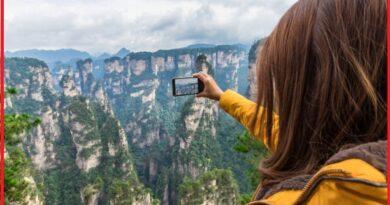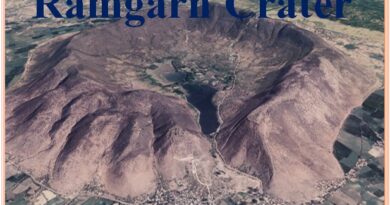The Ultimate Guide to ‘Jeju Island’ South Korea
Jeju Island
Jeju Island is a volcanic island located in the southernmost part of South Korea, in the Korean Strait. It is the largest island in South Korea and is often called the “Hawaii of Korea” due to its subtropical climate, natural beauty, and unique culture. Jeju Island is a popular tourist destination and is known for its stunning natural landscapes, including Hallasan Mountain, the highest peak in South Korea, and the Seongsan Ilchulbong Peak, a UNESCO World Heritage site.
Jeju island South Korea is also famous for its beaches, waterfalls, lava tubes, and unique flora and fauna. Jeju has a rich cultural heritage and is home to several unique cultural sites, including the Jeju Folk Village, the Jeju Stone Culture Park, and the Jeju Haenyeo Museum. The island is also famous for its cuisine, which includes fresh seafood and other local specialties.
Geology
Jeju is a volcanic island, formed by the eruption of an underwater volcano approximately 2 million years ago during the Pleistocene epoch. The island consists chiefly of basalt and lava. The island lies in the Korea Strait, south of the Korean Peninsula, and South Jeolla Province. Jeju Island has an oval shape of 73 km east–west and 31 km north–south, with a gentle slope around Mt. Halla in the center.

Jeju Island is the only place where all four Internationally Designated Areas occur at the same location. These include- Jeju Volcanic Island and Lava Tubes World Heritage Site, Jeju Island Biosphere Reserve, Jeju Island UNESCO Global Geopark and 2 RAMSAR wetland sites- 1100 Altitude Wetland and Muljangori-Oreaum Wetland.
Jeju Island weather
Jeju Island, located off the southern coast of South Korea, has a subtropical climate with four distinct seasons. The island is known for its mild weather, with temperatures that are typically cooler than mainland Korea during the summer months and milder during the winter months.
In general, the best time to visit Jeju Island is during the spring (March to May) and fall (September to November) when the weather is mild and comfortable. During these seasons, temperatures are typically in the range of 15-20°C (59-68°F), making it perfect for outdoor activities such as hiking, sightseeing, and exploring the island’s natural beauty.
During the summer months (June to August), temperatures can rise to around 30°C (86°F), with high humidity and occasional rainfall. The island can also experience typhoons during this time, so visitors should keep an eye on the weather forecast and plan accordingly.
Winter on the Island (December to February) is relatively mild, with temperatures ranging from 5-10°C (41-50°F). While snow is rare, visitors should be prepared for occasional rainfall and strong winds. Despite the cooler temperatures, winter can be a great time to visit Island, as it is less crowded and there are plenty of indoor activities to enjoy.
Also read- Geotourism around Fabulous Andaman and Nicobar Islands
Jeju island map
Jeju Island is located in the Jeju Province, which is an autonomous province of South Korea. The island is located off the southern coast of the Korean Peninsula and is the largest island in South Korea. The island has a surface area of approximately 1,848 square kilometers.

Jeju Island Attractions
Jeju Island biosphere reserve is situated in the southern part of the Korean Peninsula and covers a lava plateau with a shield volcano at an elevation of 1,950 meters above sea level. The biosphere reserve is located at the center of the island, comprising in its core area Mt. Halla National Park, two stream corridors and three islets. Many number of species inhabit in Jeju Island.
Some of the major attractions on Jeju island South Korea include Hallasan National Park, Seongsan Ilchulbong Peak, Manjanggul Cave, and Jeju Folk Village. There are also many beaches, hiking trails, and other natural attractions to explore on the island
Hallasan National Park
Hallasan National Park is a natural treasure of Jeju Island, and one of the island’s most popular attractions. The national park is named after Mount Hallasan, which is the highest mountain in South Korea, standing at 1,950 meters tall. Visitors can hike to the top of the mountain, which offers panoramic views of the island and the ocean.

There are several hiking trails in Hallasan National Park, ranging from easy to difficult. The trails are well-maintained and offer visitors the chance to explore the diverse flora and fauna of the park. There are several waterfalls located in Hallasan National Park, including Cheonjeyeon Waterfall, Jeongbang Waterfall, and Seonimgyo Bridge Waterfall. These waterfalls are popular photo spots and offer a refreshing break during a hike.
At the summit of Mount Hallasan, there is a crater lake called Baekrokdam. The lake is surrounded by rocky cliffs and offers a serene and beautiful view.
Seongsan Ilchulbong Peak
Seongsan Ilchulbong Peak is a famous volcanic crater located on the eastern side of Jeju Island, South Korea. It is one of the island’s most popular tourist attractions and is known for its stunning views and unique geological features. The volcanic crater that was formed over 100,000 years ago. It is known for its unique shape and has been designated as a UNESCO World Heritage site.
Seongsan Ilchulbong Peak is known for its stunning sunrise views over the ocean. Visitors can hike to the peak early in the morning to witness this beautiful sight. There are several hiking trails around Seongsan Ilchulbong Peak, ranging from easy to difficult. The trails offer visitors the chance to explore the park’s diverse flora and fauna, including wildflowers and birds.There is a steep stairway leading to the top of the peak, which can be challenging for some visitors. However, the view from the top is worth the effort.
Jeju Folk Village
Jeju Folk Village is a living museum located on Jeju Island, South Korea, that showcases traditional Jeju Island life and culture. It is one of the island’s most popular tourist attractions and offers visitors the chance to experience a glimpse of life in the past.
Manjanggul Cave
Manjanggul Cave is a natural lava tube cave located in Jeju Island, is one of the island’s most popular tourist attractions and is known for its unique geological features and stunning underground formations. Manjanggul Cave is a 13.4-kilometer long lava tube cave that was formed over 200,000 years ago during a volcanic eruption. It is one of the largest lava tubes in the world and is listed as a UNESCO World Heritage site.
The cave is filled with stunning underground formations, including stalactites, stalagmites, and lava shelves. Visitors can walk through the cave on a designated path and marvel at the natural beauty of the cave.
Cheonjiyeon Waterfall
Cheonjiyeon Waterfall is a natural waterfall located in Seogwipo, Jeju Island, is one of the island’s most popular tourist attractions and is known for its stunning natural beauty and scenic surroundings. Cheonjiyeon Waterfall is a three-tiered waterfall that drops approximately 22 meters (72 feet) into a clear pool of water below. The waterfall is named “Cheonjiyeon,” which means “sky connected with land,” because it is said that the water flows directly from the heavens.

The waterfall is located in a beautiful natural setting with lush forest and abundant wildlife. Visitors can enjoy a leisurely stroll through the surrounding park and take in the stunning views of the waterfall and the surrounding landscape.
Jungmun Beach
Jungmun Beach is a popular white sand beach located in the Jungmun Tourist Complex area of Jeju Island. It is known for its crystal-clear water, beautiful scenery, and various water sports activities. Jungmun Beach boasts a long stretch of white sand that is ideal for sunbathing, strolling, and playing games. The beach has been designated as a Blue Flag beach for its cleanliness and environmental management.
The water at Jungmun Beach is crystal clear and has a beautiful turquoise color. Visitors can enjoy swimming and snorkeling in the warm water, which averages around 24°C (75°F) during the summer months. Jungmun Beach is a popular destination for water sports enthusiasts. Visitors can enjoy a variety of activities, including kayaking, paddle boarding, jet skiing, and parasailing. There are also several shops that rent out equipment and offer lessons.
Jeju island beaches
The Island is known for its beautiful beaches, which attract visitors from around the world. Some of the most popular beaches on Jeju Island are- Hyeopjae Beach: Located on the west side of the island, Hyeopjae Beach is known for its clear blue waters and white sandy beach. It is a popular spot for swimming, snorkeling, and sunbathing.
Hamdeok Beach: Located on the east side of the island, Hamdeok Beach is a popular spot for swimming and sunbathing. It is also known for its scenic views and picturesque fishing village. Sehwa Beach: Located on the north side of the island, Sehwa Beach is a quiet and secluded beach that is perfect for a peaceful day by the sea. It is known for its clear water and rocky coastline. Gwakji Beach: Located on the west side of the island, Gwakji Beach is a secluded beach that is popular among locals. It is known for its clear water and picturesque surroundings.
Things to do in Jeju Island
Visit Hallasan National Park: Located in the center of the island, Hallasan National Park is home to the highest mountain in South Korea, Hallasan. The park is known for its beautiful hiking trails, diverse flora and fauna, and stunning views of the island.
Explore the Manjanggul Cave: Located on the northeast side of the island, Manjanggul Cave is one of the largest lava tubes in the world. Visitors can explore the cave’s intricate rock formations and learn about the geological history of the island.

Visit Jeju Folk Village: This outdoor museum showcases traditional Jeju Island architecture, lifestyle, and culture. Visitors can see examples of traditional Jeju Island houses, watch cultural performances, and try local food and drink.
See the Sunrise at Seongsan Ilchulbong Peak: Located on the eastern side of the island, Seongsan Ilchulbong Peak is a volcanic crater that offers stunning views of the surrounding landscape. It is especially beautiful at sunrise, when visitors can watch the sun rise over the ocean.
Relax on the Beach: Jeju Island is known for its beautiful beaches, with clear blue water and soft sand. Some of the most popular beaches include Hyeopjae Beach, Jungmun Beach, and Hamdeok Beach.
Visit Teddy Bear Museum: This museum showcases a large collection of teddy bears from around the world, with exhibits featuring famous historical figures, popular fictional characters, and traditional costumes.
Try Jeju Island Cuisine: Jeju Island has a unique cuisine that features fresh seafood, pork, and local vegetables. Some popular dishes include black pork, abalone porridge, and grilled cuttlefish.
Grand hyatt Jeju
The Grand Hyatt Jeju is a luxury resort located on the south-western coast of Jeju Island. It is 40-minute drive from Jeju International Airport and is situated near some of the island’s most popular tourist attractions, such as Jungmun Beach and the Jeju Teddy Bear Museum. The hotel offers 1,600 guest rooms and suites, all of which are designed with modern, sleek decor and feature high-end amenities. Many of the rooms offer ocean views. The Grand Hyatt Jeju features a variety of meeting and event spaces, including a grand ballroom and several smaller meeting rooms.
Some other Hotel situated in Jeju island South Korea is shilla hotel Jeju, Lotte city hotel Jeju, Jeju shinhwa world.
Seoul to Jeju island
The most convenient and popular way to travel from Seoul to Jeju Island is by air. Jeju International Airport serves direct flights from Seoul’s Gimpo Airport and Incheon International Airport, with flights taking approximately 50 minutes. There are frequent daily flights from both airports to Jeju Island, with several airlines offering competitive pricing.

For those who prefer a more scenic and leisurely journey, there are also ferries that run from several ports in the mainland to Island. The ferry journey takes approximately 4-5 hours, depending on the departure point, and offers stunning views of the ocean and the surrounding landscape.
There are also bus services that run from Seoul to Jeju, with the journey taking approximately 14-15 hours. This is the cheapest option but can be uncomfortable for some passengers due to the long journey time.
Related search-
hyatt jeju, shilla jeju,jeju island tour, shilla hotel jeju, lotte city hotel jeju, airbnb jeju island, best hotels in jeju, jeju resorts, lotte hotel jeju, jeju island hotels, jeju hotel, jeju island tourism, jeju shinhwa world, jeju island tour, airbnb jeju island, best hotels in jeju, jeju resorts, jeju resorts, jeju island tourism, shilla hotel jeju, lotte hotel jeju.



